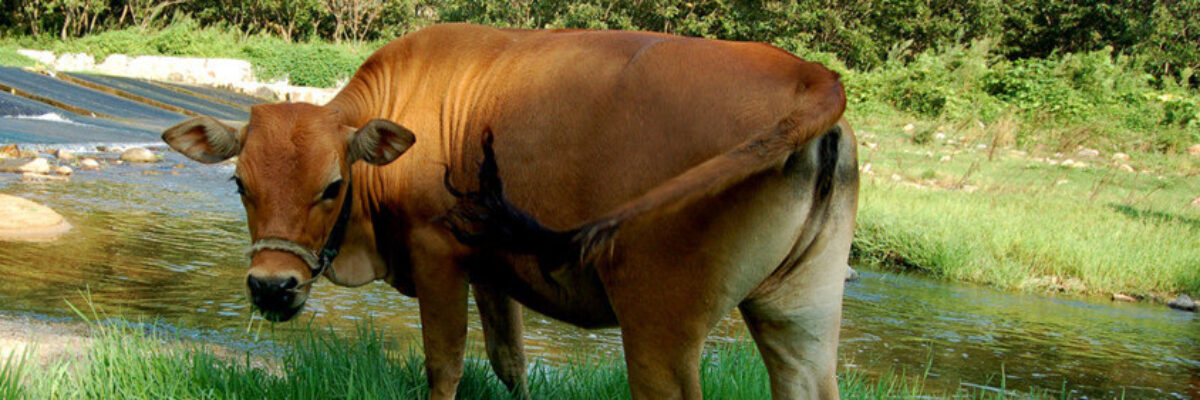Categories
Recent Posts
- Do these 7 things in spring pig breeding to reduce the number of pigs getting sick!
- Five ways to save money raising sheep!
- How to treat piglets without food? How do piglets lose weight without eating?
- In spring, the incidence of rumen food accumulation in cattle is high, pay attention to strengthen prevention and control!
- How to treat the fecal water of pig farms? These methods are worth learning
- What are the characteristics of black nose sheep? What food does black-nosed sheep not eat?
- Six things must be done to raise cattle in spring!
- What are the symptoms of cattle anthrax? Will cattle get sick after using anthrax vaccine?
- Summer is hot! How to prevent heatstroke and reduce the temperature of dairy cows?
- What is the reason for lack of manganese in cattle? What should cattle do if they lack manganese?
Beef cattle breeding technology: how to raise beef cattle efficiently

Beef has always been a kind of meat food with the top demand. As the main source of beef, many farmers want to raise beef well. So what should we do if we want to raise beef cattle? Next, I will introduce the beef cattle breeding technology to you and see how beef cattle are raised efficiently!
Requirements for environmental facilitie
The suitable temperature for cattle growth is 10-25 ℃. Because of the closed enclosure, the enclosure is required to have good lighting, drainage, ventilation and thermal insulation performance, which is convenient for disinfection, ventilation and ventilation, adjusting the temperature and humidity in the enclosure, driving out flies and killing rats, and at the same time requires no noise, water and air pollution around.
Requirements for calves
Select healthy calves with a weaning weight of about 200 kg at the age of 5-6 months. The best male parents for their hybrids are Angus, Limousin, Charolais, Simmental and Piemonte. In addition to fully disinfecting the enclosure before entering the enclosure, newly purchased calves also need to be disinfected by spraying 0.3% peracetic acid solution on the body surface, and cattle with more lice mites need to be sprayed with 2% trichlorfon solution to drive away.
Management of adaptation period of calves
The adaptation period is generally 15-20 days. During this period, adjust the diet of cattle, feed some easy-digestible forage, and observe their feeding and activities. After 7 days, the insect repellent was started, and the drug was administered at 0.1 g per kg of body weight per head. If there were ectoparasites, the drug could be administered again at 40 mg per kg of body weight per kg of trichlorfon on the 7th day after the insect repellent. From the fifth day after being put into the market, gradually add 30g of salt, 20-60g of urea, 40-60g of rumen The distiller’s grains mixture is 2-7 kg (5 portions of distiller’s grains and 1 portion of bran), in which the distiller’s grains, urea and rumen are gradually added from the least to the most. When feeding, they are mixed with other diets to form a wet feed. Drinking water is prohibited within 1.5 hours after eating. If there is ammoniated feed, urea can not be fed, and the ammoniated feed or micro-storage feed can gradually replace the coarse feed. Strengthen the epidemic prevention of the cattle in the market, and inject the corresponding vaccine regularly.
Feeding management during fattening period
The fattening period takes 11-13 months. The body weight before 250 kg is the early stage of fattening, and the intensive fattening stage begins from 250 kg. At this stage, a needle of fat can be used for cattle, and the meat quality after use can meet the international export standards. One time is enough. In the fattening period, the activity of cattle should be limited and the cattle should be tethered in the house. The cattle should be fed once every morning and evening at 6:00, and the water temperature should not be lower than 4 ℃. The ration shall be reasonably allocated according to the nutritional needs of cattle at different growth stages, and the feeding shall be changed gradually within 2-3 days. During the whole fattening process, attention should be paid to observing the feed intake and digestion of cattle, so as to find problems in time and solve them quickly, and try to avoid acidosis Sudden death such as urea (ammonia, poisoning, etc.) occurs. If symptoms such as restlessness, eye and muscle tremor, and mouth foaming occur within 1 hour after eating, cardiac diuretic drugs should be injected immediately, and the pH of rumen and urine should be measured with litmus test paper (The normal pH value of cow urine is 7.7-8.7. When the pH value of urine is higher than the normal value, give the cow 500 ml of vinegar and 500-1000 ml of sugar water. If the urine is acidic, give the cow 200 g of soda and 500 ml of water. At the same time, infusion, gastric lavage, diarrhea, etc.
